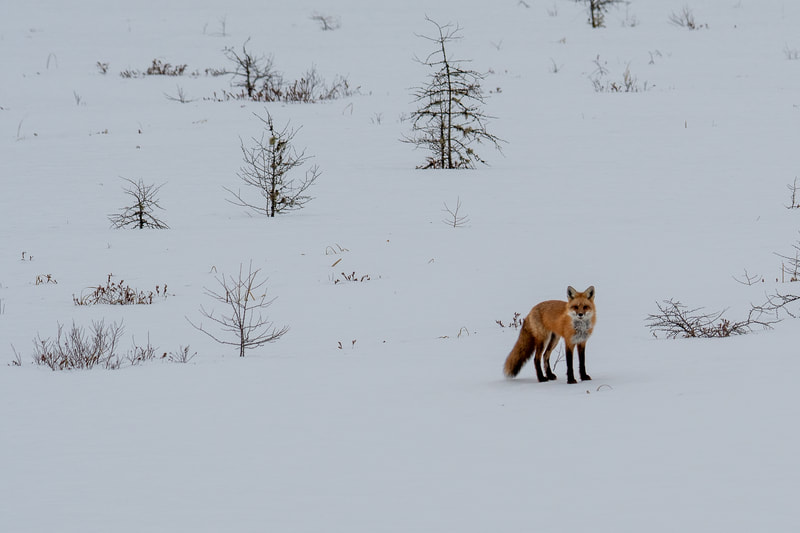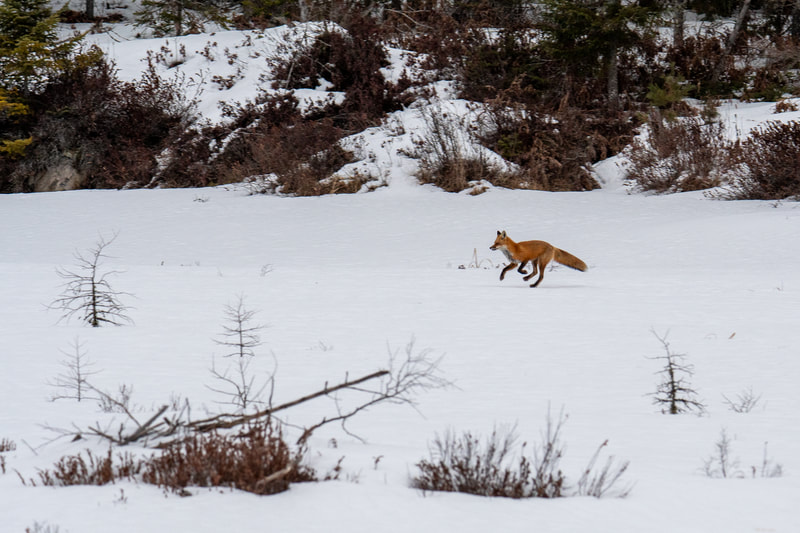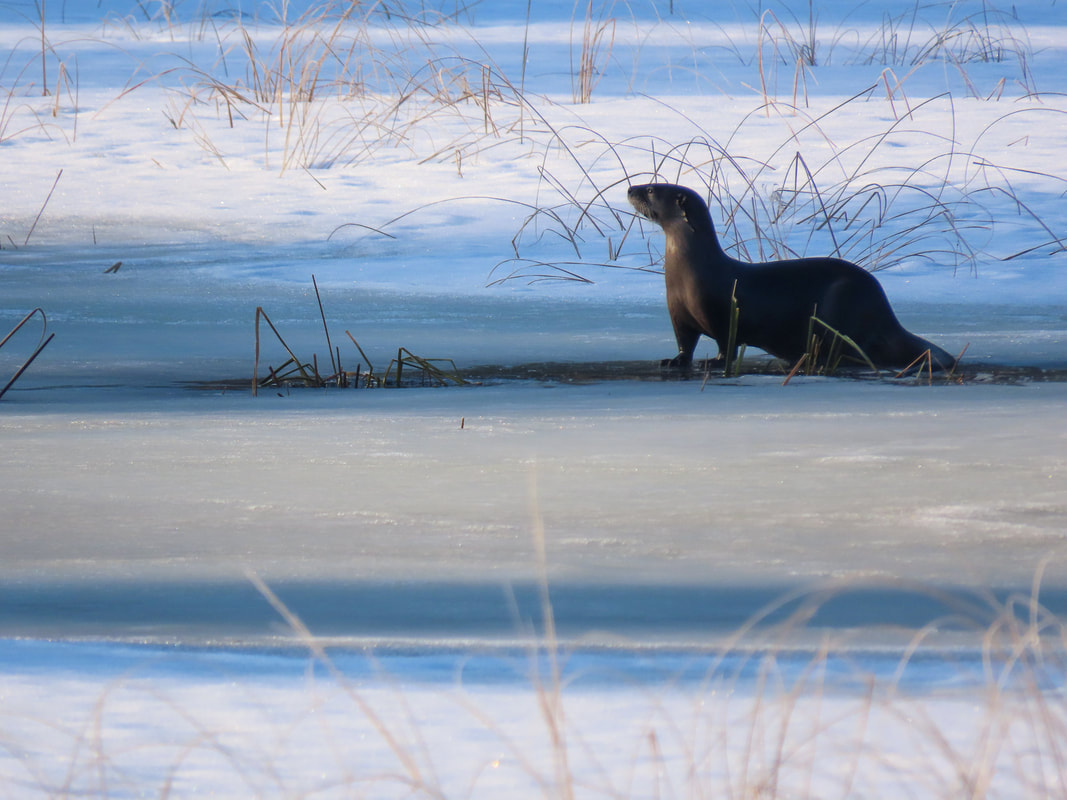Algonquin Park is a large (over 7,600KM) park around three hours North of Toronto in Ontario Canada. The park is accessible year round, but some of the parking lots and side roads may be unplowed during the winter and difficult to use. The main highway running through the park is Highway 60 with the town of Dwight being on the West end and the town of Whitney being on the East end of the park. It takes approximately one hour to drive highway 60 through the park and the towns on each end are small so stores have limited hours of operation. It is advisable to keep your fuel and supplies topped off so you don't lose a morning waiting for stores to open. There are larger towns but they will take more time to each wasting fuel and time.
I went with only a rough idea of where to look for wildlife in the park. Since the park is so large there are many places that are relatively unknown and good viewing areas undoubtably remain to be discovered but looking on inaturalist will give you a start especially if you have limited time in the park.
The first trail I tried is known as Mizzy Lake trail. It took me around four hours to complete and is a 11 KM loop. As my visit was during the winter the trail was somewhat icy and hiking spikes would have made for surer footing. The first animal I encountered was a hare crossing the trail. A short time later I came to some frozen lakes on either side of the trail. On one side where two otters fishing on the other side a red fox was crossing the lake. Marten and fox were occasionally visiting the parking lot trash can (confirmed by game camera and another hiker had pictures of a marten on the trash bin).
I went with only a rough idea of where to look for wildlife in the park. Since the park is so large there are many places that are relatively unknown and good viewing areas undoubtably remain to be discovered but looking on inaturalist will give you a start especially if you have limited time in the park.
The first trail I tried is known as Mizzy Lake trail. It took me around four hours to complete and is a 11 KM loop. As my visit was during the winter the trail was somewhat icy and hiking spikes would have made for surer footing. The first animal I encountered was a hare crossing the trail. A short time later I came to some frozen lakes on either side of the trail. On one side where two otters fishing on the other side a red fox was crossing the lake. Marten and fox were occasionally visiting the parking lot trash can (confirmed by game camera and another hiker had pictures of a marten on the trash bin).
The next place I investigated was the Mew Lake Campground. You can tent camp or rent a heated Yurt or Cabin (reserve those early, they do sell out). I believe this is the only campground open during the winter. The main attraction here is actually the garbage bins. It took a couple of tries but eventually I did see Martens here. The Marterns here are relatively bold and can be photographed at closer range than those I saw in other areas of the park. Grouse also visit the area behind the trash bins and a red fox was at the bins when I checked them at night. There are some trails that also can be accessible from Mew lake. One is called the Old Railway trail and is closer to Highway 60. Another trail can be accessed from the garbage bin area.
Spruce bog has some suet feeders and many people feed birds in the parking lot. I hiked this trail a couple of times but did not see anything. There are tracks in the area, so it is being used. However luck was not with me there and heavy human use and a lack of time prevented further efforts. Along the highway itself I did manage to spot an otter while driving.
Opeongo Lake road is another road that is open during the winter. Apparently there is a store that is open during warmer weather. Not long after turning on the road there is a picnic area on the left. Martens visit the trash bins at times. Further along the road an otter was out daily fishing in ice holes. Continuing up the hill the road is closed at a Y intersection. The road to the right is an active logging road and driving up without communicating with logging staff is not recommended, it would be much safer to walk. The closed road to the left is open for hiking. There is a parking lot at this intersection which is often used by bird watchers where they feed the birds. Many marten tracks can be seen down the hillside behind the feeder and martens often come to look through the food at the bird feeding area (note: official park rules state food should be securely stored). The martens I saw here were more skiddish than those at Mew Lake.
Martens can also be seen at the Logging museum area, although I did not see any. I did see a black backed woodpecker there. Birds can also be seen at the Visitor's center. Here are some of the birds seen in the park.


